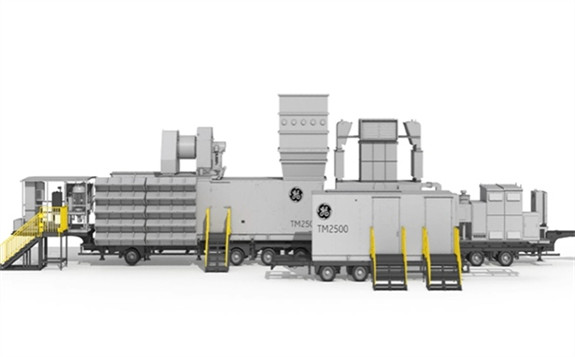GE Gas Power has signed an agreement to build, own and operate a power plant equipped with mobile TM2500 aeroderivative gas turbines for the Centralized Utilities Company (Marafiq) in Oman.
 Image: GE Gas Power
Image: GE Gas Power
GE will supply four TM2500 units for the project, providing up to 80MW of power at the new plant based in the Special Economic Zone at Duqm.
The power will be purchased from Marafiq by the Rural Areas Electricity Company SAOC (Tanweer), an Oman government owned company mandated to provide power in various regions of the country.
“GE’s TM2500 solution is an excellent fit for this new project at Duqm,” said Hamed Ali Al Wahibi, GM Business Development & Strategy at Marafiq.
“The technology offers a reliability rate of over 99 per cent and more than 20 years of proven experience with over 300 units installed around the world and we believe it can bring significant benefits to Duqm.”
Often described as GE’s ‘Power Plant on Wheels’, the TM2500 aeroderivative gas turbine is a complete turnkey energy solution that can be redeployed from one location to another. The TM2500 units will replace power currently generated by diesel generators in Duqm, reducing annual carbon dioxide emissions by up to 90 thousand tons per year – the equivalent of taking up to 20 thousand cars off the roads.
Joseph Anis, President & CEO of GE Gas Power Europe, Middle East and Africa, said: “The project illustrates how switching from diesel or oil-fueled power generation to gas can help power producers to generate more sustainable electricity, without compromising on the reliability, flexibility and affordability of power supply.”
GE’s TM2500 solution can provide a baseload bridge to permanent power installations; generate backup power in the wake of plant shutdowns, grid instability or natural disasters; and be installed at isolated locations. It also offers significant flexibility, operating on a wide variety of fuels including natural gas, liquefied petroleum gas (LPG) and distillate liquid fuel.
GE is expected to commission the plant in as little as five months’ time. The facility will then be operated for a minimum of three years until the area is connected to the main 400 kilovolts (kV) grid.